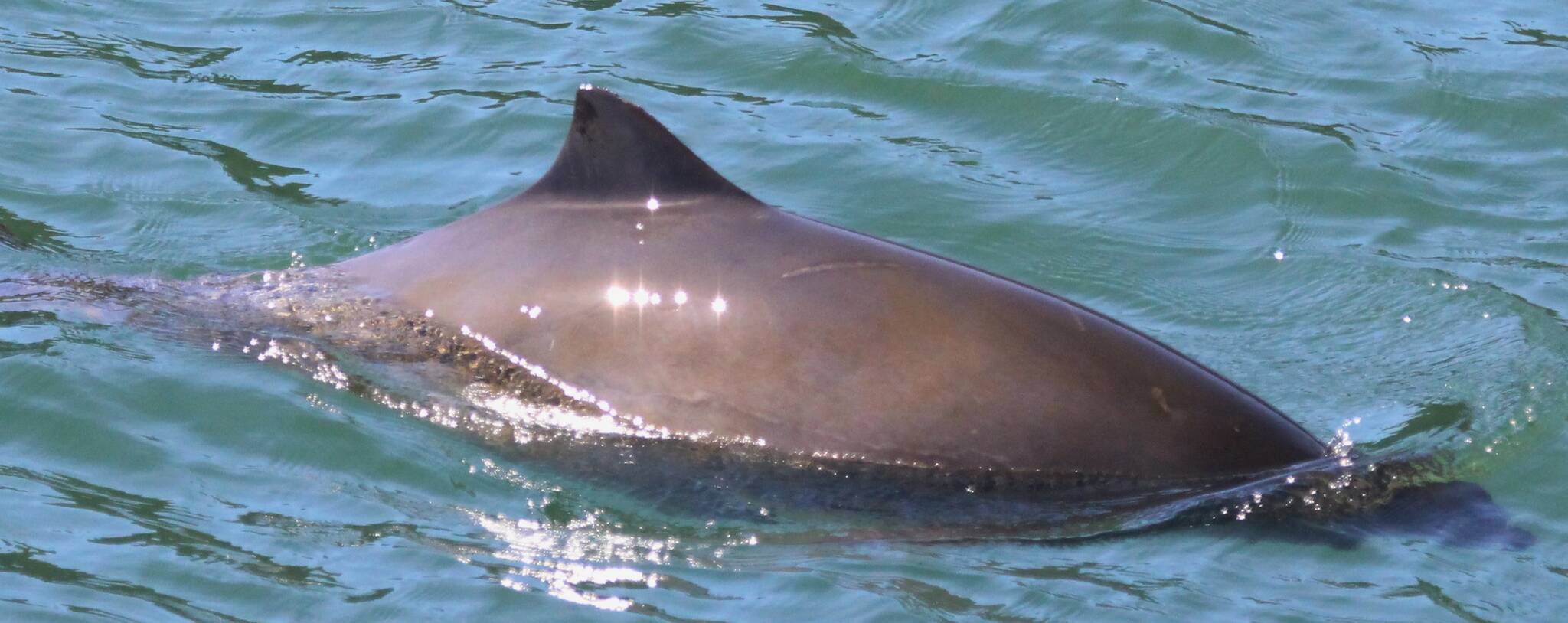Although they may not be as flashy as dolphins or as star-studded as the cast of orcas that call the Salish Sea home, there are plenty of things that make porpoises just as intriguing cetaceans.
Over the years, more is becoming known about Dall’s porpoises and harbor porpoises, the two species that inhabit the Salish Sea. Thanks to Pacific Mammal Research, an Anacortes-based nonprofit organization that started in 2014, efforts have been taken to identify individual porpoises.
Yet there is more to discover, and leaders of the organization invite Whidbey residents to consider becoming volunteer citizen scientists and keeping an eye out for porpoises. Kids can also become savvy about porpoises at an upcoming Langley Whale Center event.
Cindy Elliser, founder and research director of Pacific Mammal Research, said that previous researchers believed porpoises were not good candidates for photo identification because they lacked distinctive features. She set out to prove them wrong.
“With digital photography and patience, we found that you can identify individuals,” she said.
She sat out on a rock near Burrows Pass – not far from Washington Park in Anacortes – and took countless photos of the harbor porpoises that swam by, which prefer shallow, coastal waters.
“As their name suggests, the harbor porpoises usually stay a few miles from shore their whole lives,” Elliser said. “They’re not usually galavanting around.”
Though dark gray in color, Elliser found they could be identified individually by subtle changes in pigmentation, and visible scars and lesions.
“We were one of the first ones to show that you can do long-term photo identification on porpoises, and now other organizations around the world are doing it,” she said.
Harbor porpoises are the second smallest cetacean in the world, usually measuring between 5 to 5 and a half feet long and weighing around 150 pounds. A survey completed between 2013 and 2015 placed their total population at 11,233 in the inland waters of Washington state.
In comparison, Dall’s porpoises are much fewer in numbers. The last count of the population was completed in 1996, which put them at just 900 in the state.
Dall’s porpoises are black and white, which sometimes gets them mistaken for baby orcas. On average, they can measure between 7 to 8 feet and weigh 500 pounds.
Elliser said they are fast in the water and “splashy” at the surface. They prefer deeper waters than harbor porpoises and as a result have been seen from boats. They like to ride the wake of waves and they make a characteristic splash referred to as a rooster tail.
“They surface so quickly that sometimes you see more water than you do animal,” Elliser said.
Both Dall’s and harbor porpoises share a similar diet of forage fish, such as herring, although some harbor porpoises have been known to enjoy an occasional salmon. The porpoises are not migratory and stay within the Salish Sea year-round, perhaps because having a predictable food source ensures that they won’t starve in the cold waters.
Worldwide, there are just seven species of porpoises. Porpoises, with their triangular-shaped dorsal fins and spade-shaped teeth, differ from dolphins, which have curved dorsal fins and cone-shaped teeth. Dolphins also often have a beak – although orcas, which are considered to be dolphins, do not. Dolphins are social animals that travel in large pods, whereas it’s not uncommon to find a porpoise all by itself.
Like any other cetacean in the Salish Sea, pollution is a threat to the well-being of the porpoises. Transient mammal-eating orcas prey on harbor porpoises, but not usually Dall’s porpoises.
Pacific Mammal Research focuses on photo identification and behavioral surveys around Anacortes, but is looking to collect more information on porpoises all around the Salish Sea. Elliser said harbor porpoises have been seen from West Beach before, but that’s the only location she knows of on Whidbey Island.
“Honestly, any location is good because as I explain to my students all the time, ‘negative’ or ‘no’ is just as valid in science,” she said.
Volunteers on Whidbey who want to get involved can visit the organization’s website at pacmam.org/wp/ or email Elliser at cindy.elliser@pacmam.org.
Those interested in becoming citizen scientists can attend an upcoming virtual training at 5:30 p.m. on Wednesday, March 29. They must also pass a couple of quizzes that focus on identifying cetaceans and filling out data sheets.
Kids can learn about the two different species of porpoises by attending an event with Elliser at 4 p.m. on Wednesday, March 22. The hybrid event will be offered both online and in-person at the Langley Whale Center. To attend virtually, participants must register in advance. Those planning to join in-person should email katie@orcanetwork.org to help organizers get an estimate of how many people will be there. For more information about the event and to register, visit orcanetwork.org/events.



